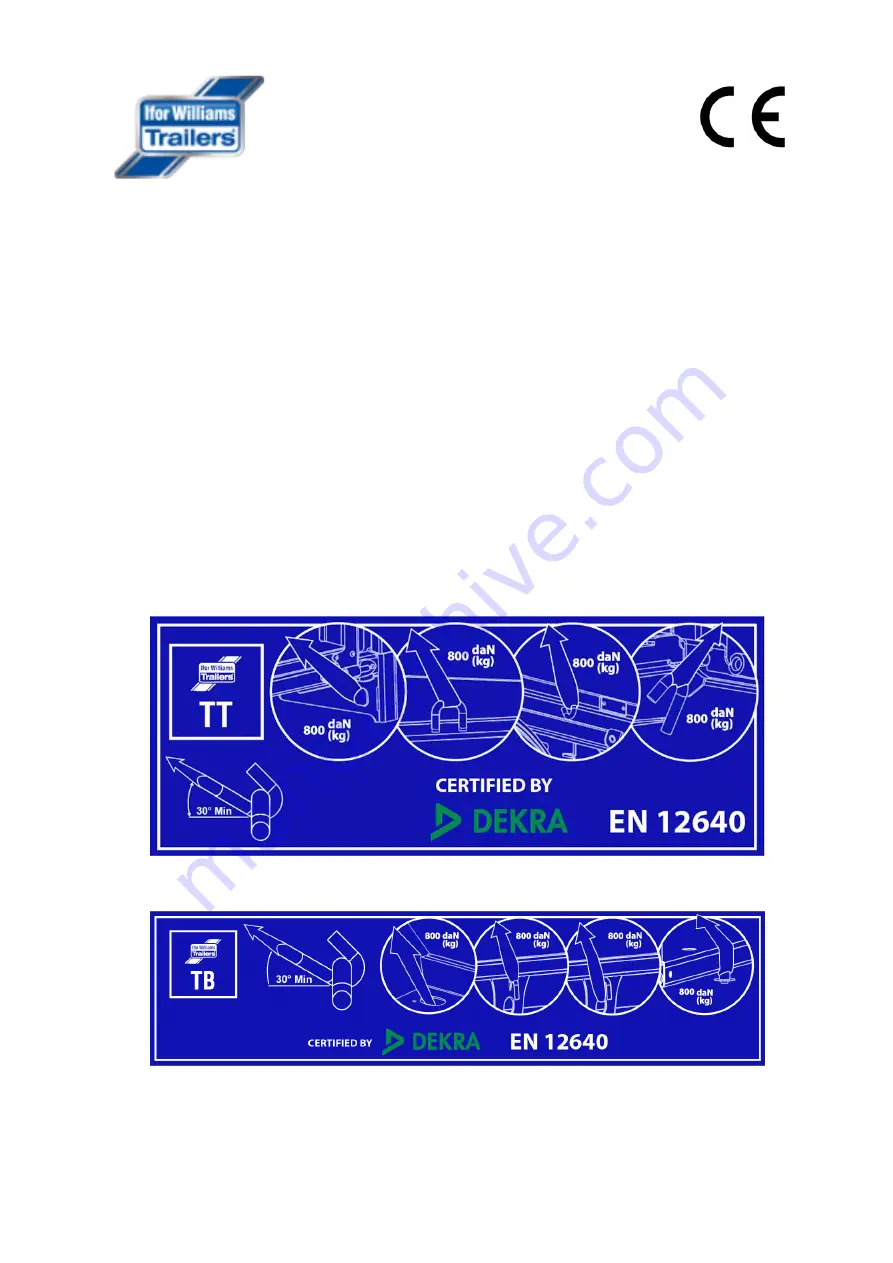
Page | 8
2
–
Load Security
•
Except in the case of tipping trailers carrying aggregate loads
–
sand and gravel for instance -
always ensure the load is secured against movement.
•
Be aware that the highest loads occur during braking and restraint against forward movement
is particularly important. For that reason, lashings running diagonally, forwards from a rear
lashing point, around the front of the load and rearwards to the opposite lashing point are
preferred to those going straight across the load. A similar front, rearwards, front lashing
restrains against rearwards movement. A third lashing might be fitted directly over side to
side.
•
The UK Code of Practice: Security of Loads in Transport gives some guidance but is biased
towards Heavy Goods Vehicles. At variance with advice in that document, Ifor Williams rope
hooks are 800 kg rated lashing points. All the rated lashing points for a particular trailer type
are shown pictorially on a decal fitted to the front of the trailer. Each lashing point is rated at
either 500kg or 800kg and
the sum total of lashing points used should exceed the weight of
the load restrained. For example: 2500 kg load, use 2 pairs of lashing rings: capacity 2 x 2 x 800
= 3200 kg.
•
All the oval holes in the floor of TB and CT177 trailers are 800 kg rated attachment points for
ratchet tensioner “claws”.









































